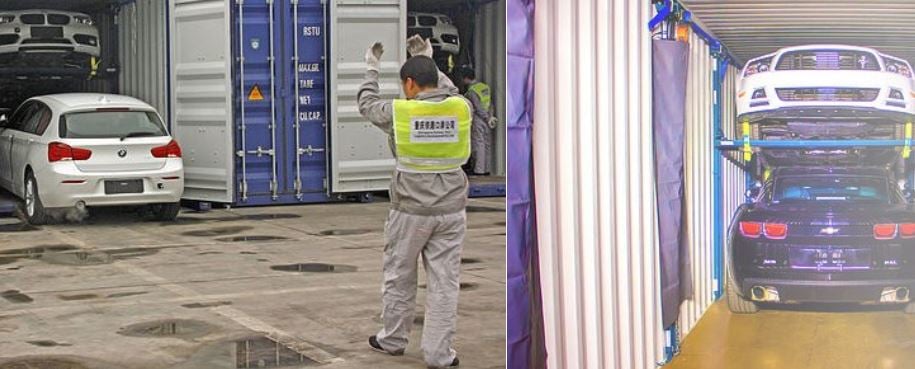
RoRo, using specialist ocean going vehicle carriers, is the cheapest method for sending cars long trans-global distances when available. It is perfect when time is not a critical factor and when it suits the sender to unload the cargo in one of the specialist port facilities that handle these vessels.
However, there are some disadvantages to using RoRo vessels too.
A Little Bit Of RoRo History
RoRo is old technology. It has its roots way back in the 1830s when the rolling stock that needed to be transported consisted of trains. The first dedicated RoRo service carried trains across the 5 miles of the Firth of Forth in Scotland in the 1850s. It was only after WW2, when road transport came into the ascendancy, that the need for dedicated road vehicle RoRo capability was realised. Nowadays, almost every ferry line between countries has RoRo capabilities for tourist and freight haulage. The biggest one locally is the Ulysses owned by Irish Ferris that plies between Holyhead and Dublin and can carry 1342 cars.
Specialist PCC (Pure Car Carrier) and PCTC (Pure Car & Truck Carrier) vessels have a far higher capacity and this economy of scale and their specialist design deliver cost efficiencies for bulk transport. Decks are designed around efficient loading and unloading and are height-adjustable to maximise the inboard cargo space utilisation. They are almost all of Panamax width (can pass through the Panama Canal). Profitability depends on cargos in the region of 3,000 vehicles – just to provide an indication of scale.
Downsides Of RoRo
- Limited to deep sea ports - Ocean going RoRo vehicle carriers of this type require deep water ports. Think Southampton, Leith, Port of London and so on. Some smaller countries do not even have suitable ports.
- Requires specialist unloading facilities - Not every deep sea port has the facilities required to service vehicle carriers. Appropriate ramping, a large number of stevedores to drive the vehicle on and off the vessel, and a sufficiently large adjacent secure car park to store them in.
- Lack the routing flexibility of containers – the above two points add up to a deficiency of the RoRo system that the container system has been excelling at for decades. Because container traffic is designed to be transported by land, rail and air, as well as by sea, it is safe to say that practically no destination cannot be reached.
- Not a good option for high value vehicles - Cars parked in a RoRo vessel are unprotected and insecure compared with cars sealed inside a container, for example. The port workers who loaded a RoRo vessel know exactly what has been loaded and where the valuable cars are. At the very best, it poses a security risk.
- Vehicles more susceptible to damage - Because the cars are driven on and off the vessel, the probability of suffering accidental damage is far higher than if the cars were transported inside a container. Containerising means that the cars are loaded only once and unloaded only once, no matter how many segments the journey is broken into, nor whether it involves sea, air, road or rail, or a combination of all.
- Also limited to large volumes. RoRo vessels won’t take 10 cars to a small location because of profitability.
Discover The Alternative To RoRo That Makes Real Financial Sense
To find out more about how the Trans-Rak system makes containerisation of car transport a feasible option nowadays, please download our free eBook The Containerised Car Transport Guide.















